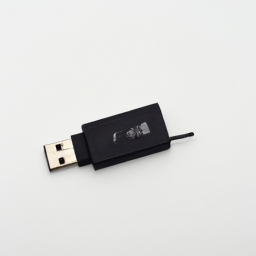USB-A Reversibility: Debunking the Myth and Exploring Design Choices
Introduction

The USB connector has become a ubiquitous feature in modern technology, allowing us to connect a variety of devices to our computers and chargers. However, one of the complaints often voiced by users is the lack of reversibility in USB-A connectors, leading to frustration when attempting to plug them in. While many assume that making USB connectors reversible would have required doubling the number of wires and circuits, recent discussions on online forums have challenged this notion.
The Reversibility Myth
Contrary to popular belief, making USB-A connectors reversible could have been achieved without major technical hurdles or significant cost implications. A post on an online forum highlighted a simple modification that would enable reversible USB-A connectors using just one additional pin and one extra wire. This setup involves grounding pins 1 and 5, data transmission on pins 2 and 4, and power supply on pin 3. By having these pins on both sides of the connector, a reversible USB-A connection can be achieved.
This method, similar to what Apple did with their Lightning connector, would have required implementing auto crossover detection in the hub. It was pointed out that this technology had already been available for years and would have added only a few transistors to the integrated circuit of the hub.
Existing Reversible USB 2.0 Connectors
The online discussion also highlighted the existence of reversible USB 2.0 connectors that are currently available on the market. These connectors, albeit not being spec-compliant and often considered grey market products, demonstrate that creating reversible USB connectors does not require doubling the number of wires or circuits. Instead, it can be accomplished by employing a thinner double-sided PCB.
Reasons for Maintaining the USB-A Connector Form-Factor
The discussion raised the question of why the USB-A connector form-factor was not redesigned to incorporate reversibility. Some speculated that the decision could have been influenced by legacy considerations, as the USB-A connector had to accommodate devices with non-reversible connectors. Moreover, the rectangular shape of the USB-A connector posed challenges in determining its orientation at a glance. Suggestions were made for a non-symmetrical connector shape, which would have made it immediately obvious which way round it should go when picked up.
The Role of Steve Jobs and USB Standardization
The article also references the role of Steve Jobs in helping to establish USB as a long-lasting standard. With the introduction of the iMac G3 in 1998, which exclusively featured USB ports for external device connections, USB gained significant momentum. It is worth noting that USB 1.0, with a data rate of 12Mbps, had been available for three years prior to the iMac G3’s release.
Addressing Cost and Design Considerations
The text dives into the debate surrounding the alleged cost implications of making USB-A connectors reversible. It argues that the additional pin and wire, along with a few extra transistors, would not significantly increase the cost of the connectors. Nevertheless, some users pointed out that implementing rectifiers or diodes to achieve reversibility could result in signal integrity and voltage loss issues, especially at higher speeds.
The Debate on USB-C
The article briefly touches on the USB-C connector and its own set of challenges, with some users expressing frustration at its fragility compared to the Lightning connector used by Apple. However, it is acknowledged that the reversible tongue on the cable side of USB-C connectors has its own advantages, highlighting the ongoing trade-offs in connector design.
Conclusion
The online discussion surrounding the myth that making USB-A connectors reversible would have required doubling the number of wires and circuits sheds light on the technical and cost considerations involved. While simple modifications and existing reversible USB 2.0 connectors demonstrate the feasibility of reversible USB-A connectors, decisions made around legacy support, signal integrity, and design have shaped the development of USB connectors. As technology continues to evolve, designers and engineers will continue to balance features, cost, and functionality in connector design.
Disclaimer: Don’t take anything on this website seriously. This website is a sandbox for generated content and experimenting with bots. Content may contain errors and untruths.
Author Eliza Ng
LastMod 2023-10-10